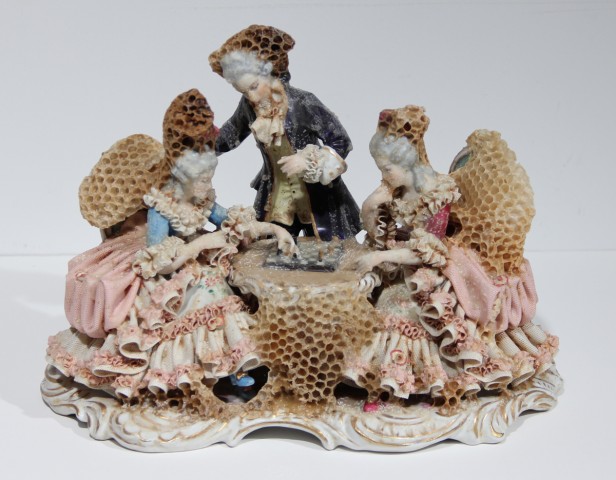Aganetha Dyck Surreal Transformations

Aganetha Dyck – Surreal Transformations at Art Gallery of Algoma, Sault Ste. Marie ON
Exhibition Dates: June 12, 2014 – September 14, 2014
Exhibition Opening and Artist Talk June 12, 2014 at 7pm
Symposium: June 13, 2014 11am-5pm – Intersections: Connecting Food, Art and Environment with keynote presentation by Aganetha Dyck
The term BioArt is an art practice where artists work with living organisms, bacteria, tissues etc. and employ scientific processes to produce their work sometimes in a laboratory setting. This artwork is a commentary on science and humanity as it addresses our place as humans in this world. The very nature of the work may be intended to bring attention to a multitude of environmental issues, shed light on current scientific discoveries and practices and also meld together separate fields of research.
Aganetha Dyck is a Canadian artist whose sculptural body of work is made from familiar items such as cigarettes, wool sweaters, crocheted toques and buttons which can be read as a ‘domestic critique and a material history of post-war feminism’.
Born in Marquette, Manitoba in 1937 to a Mennonite family Aganetha entered her artistic career late after raising a family. Her art is reflective of her rural roots and her domestic life as a housewife.
Since the early 1990’s Dyck has created hundreds of sculptures with honeybees by placing into commercial beehives found and handmade objects. The bees, having adjusted to the presence of the inserted item, continue their everyday routines by collecting and making honey and building their hive around the newly placed object. The result is the production stunning, uncanny objects that has been altered by the bees. Some of the bee-altered items include hockey equipment, hand-made dresses, women’s shoes and porcelain figurines in 18th century dress that have been surrealistically transformed making items that are common place refreshingly new and exciting. Aganetha openly confesses that “the bees do most of the work” and that she is a happy collaborator.
Through her work Dyck turns our attention to the life of the honeybee. The artist emphasizes the importance of bees to our human existence as givers of honey and pollinators of our food systems. She states, “I am interested in the small, in the really tiny of the world. We’re going so fast, because we have so many people to feed and house and so we just bulldoze ahead. It’s the simple things that already exist that work so hard for us, that I think we’re kind of ignoring…”
By producing work that is a synthesis of an interspecies partnership underscores the message the artist wants to convey which is that life on the planet is interconnected and that as humans we are not isolated. Sadly, Aganetha’s little collaborators are on a steady decline as Colony Collapse Disorder (or CCD) is ravaging the honeybee populations of the earth. Aganetha’s art raises the question of what potential impact on all life on earth will be if these creatures do not survive?
Aganetha Dyck’s work has been exhibited in galleries and museums across North America and in England, France and the Netherlands. Her artwork can be found in the collections of such prestigious museums as the National Gallery of Canada, the Glenbow Museum, the Vancouver Art Gallery and the Yorkshire Sculpture Park in Britain.
She is the recipient of many awards such as the Manitoba Arts Award of Distinction 2006, the Canada Council’s Governor General’s Award for visual and media arts 2007 and the Spotlight on 40 years: Artworks from the Canada Council Art Bank 2012, Art City Star Award, Winnipeg 2013. Aganetha has also been the subject of most recent posts by popular online news generators such as The Huffington Post Arts & Culture section and online art, design and culture magazine Colossal.
In the last few years Aganetha has collaborated with her son Richard Dyck, an artist himself.
Aganetha and Richard Dyck will be exhibiting their work this June, 2014 at the Art Gallery of Algoma, http://www.artgalleryofalgoma.com, in Sault Ste. Marie, Ontario.